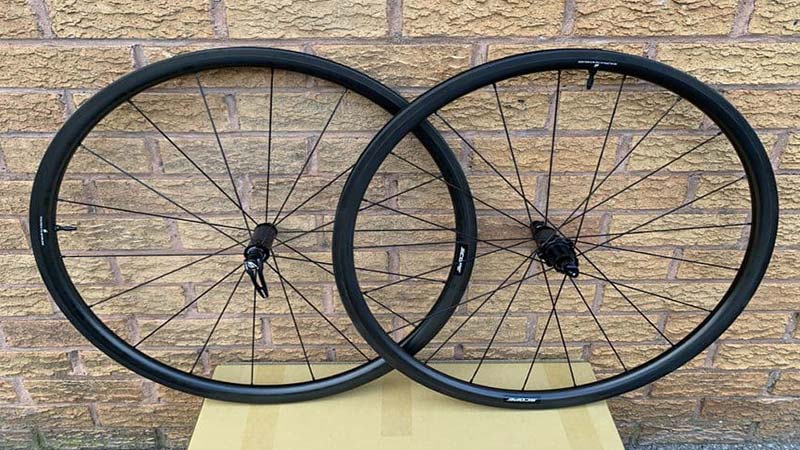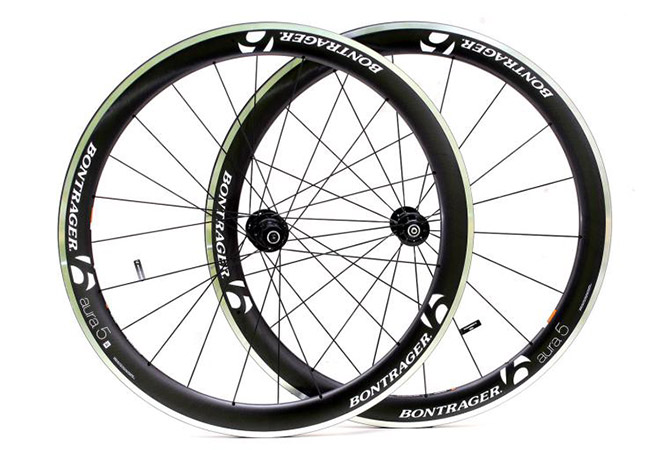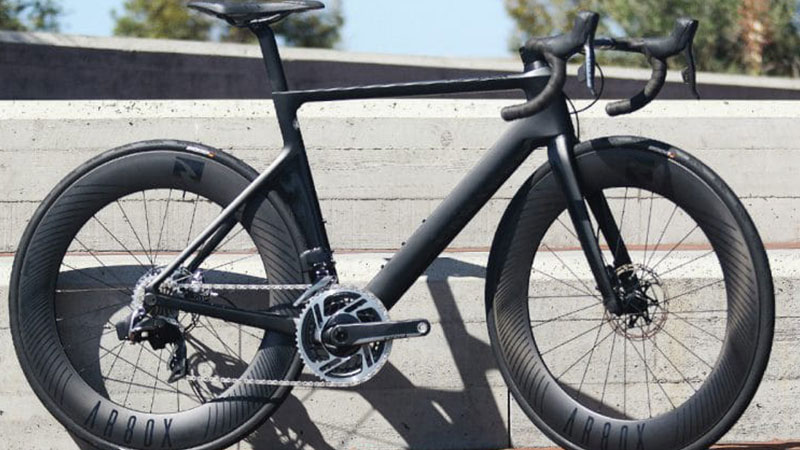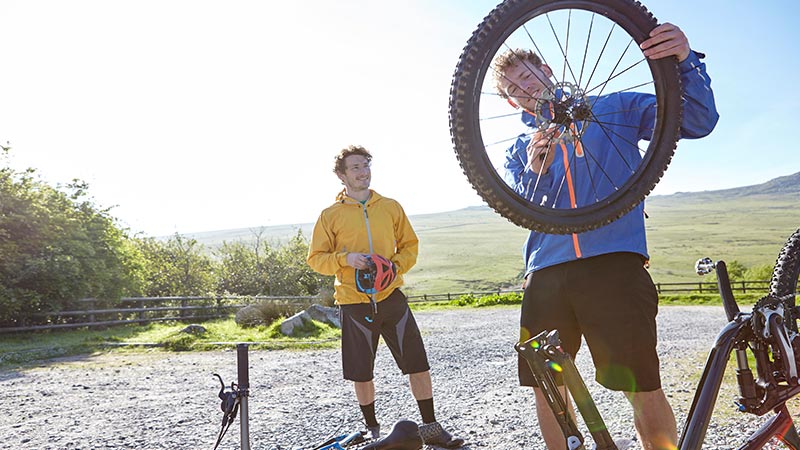Personal Development
How to Measure Bicycle Wheel Size – Tips & Tricks
How do you measure bicycle wheel size? A bicycle’s wheels are it’s one of the most vital components. Bike wheels not only allow us to cycle smoothly, but they also give damping from lumps and bumps, as well as traction on the surface we’re riding on. So it’s crucial to know how to measure bicycle wheel size as there are many applications for this.
Many cyclists are unsure how to measure a bicycle wheel or a bike tire accurately, so I created this bicycle wheel size chart to assist you in determining your current wheel size and the size you’re aiming for.
So without any further ado, let’s get started.
Table of Content
Why Do You Need to Measure Bicycle Wheels?
Riding with wheels that are too big or tiny might cause harm to your bike. But there are many other reasons. For example:
1. Changing Your Tyres
If that’s the case, then you need to know your wheel size for the correct fit.
2. Changing Your Wheels
You may be looking into changing your wheels if your current wheel size doesn’t seem right for your bike.
3. E-bike Conversion
When converting a bike to an e-bike, you may need to change your tyres as the extra components will put added stress on the frame of the bike as well as the tyres. So, you may need to change to something more robust so that the bike frame can handle the added stress.
Different Types of Bicycle Wheels
Did you know that bicycle wheels also differ in their application apart from different wheel sizes?
In terms of section, there are three types of bike wheels:
- Shallow section wheels
- Mid section wheels
- Deep section wheels
 Do you need a bicycle maintenance course?
Do you need a bicycle maintenance course?
Shallow Section Wheels
These are used on entry-level wheels because they are inexpensive and have an excellent strength-to-weight ratio without sacrificing the comfort aspect for the rider.
Shallow section wheels are a fantastic all-around wheel that may be used for a variety of riding styles. There are a variety of models and combinations to choose from. They range from entry-level to top-of-the-line, lightweight carbon fibre climbing variants.
Take a look at these shallow section wheels from Paul Mines Cycles.
Mid Section Wheels
These wheels aren’t as well-known or prominent as the Deep Section Wheels option. This is largely due to the misconception that a deeper wheel equals faster and better performance.
But, this isn’t always the case. Your riding style and personality may predispose you to one wheel type over another.
A mid-section wheel combines the advantages of a lightweight rim with the aerodynamic benefits of a deeper section. Many riders prefer them for all-around use because they’re light enough to climb and swift enough to ride on flat surfaces too.
The following is an example of mid section wheels from Road.cc
Deep Section Wheels
The highest aerodynamic advantages for road cycling speed come from deep section wheels. They effortlessly cut through the wind and make out-of-the-saddle sprinting an exhilarating feeling that’s difficult to describe.
However, they’re best suited to flat terrain in general because aerodynamics play a bigger role there. But, with developments in manufacturing technology, they can now be light enough to ride in the mountains too.
There are three types of bike wheels in terms of tubes used in the wheel:
- Clincher road bike wheels
- Tubular road bike wheels
- Tubeless road bike wheels
Clincher Road Bike Wheels
These are usually lighter than clincher alternatives. The reason for this is that there is no requirement for a bead seat on the inside of the rim. Depending on whether you use adhesive or tubular tape to mount your tyres, tubular wheels require extra preparation.
When utilising tubular tyres for sporting events or training, it’s good to have a spare tubular tyre on hand. These are more difficult to handle than a spare innertube. There is no time difference between changing a tubular tyre and changing an inner tube, so you’ll not be penalised in terms of time.
Tubular Road Bike Wheels
In recent years, tubeless wheelsets have grown extremely popular. However, due to the necessity of more material on the rim to provide an airtight seal for the specific tubeless tyres used, these wheels are usually slightly heavier than clincher-only versions.
On the plus side, you won’t be using inner tubes, which means you’ll be losing some of that crucial spinning mass. Because of their construction, pinch punctures are also less likely.
Tubeless Road Bike Wheels
In recent years, tubeless wheelsets have grown extremely popular. However, due to the necessity of more material on the rim to provide an airtight seal for the specific tubeless tyres used, these wheels are usually slightly heavier than clincher-only versions.
On the plus side, you won’t be using inner tubes, which means you’ll be losing some of that crucial spinning mass. Because of their construction, pinch punctures are also less likely.
How to Measure Bicycle Wheel Size – Step by Step Guide
Now, onto our main discussion: how do you measure a bike wheel?
So, there are a couple of ways of measuring a bicycle wheel. However, we’re only going to talk about two today:
- Standard method
- ISO method
As a quick side note, if you need to measure the circumference of your tyre quickly, simply start by measuring the diameter and then multiply the diameter by pi (π = 3.14159).
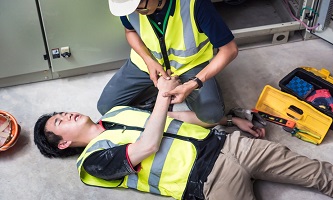
First Aid at Workplace
- Accredited Courses
- Tutor Support Included
- 3 Installment Plan at checkout
- 14 Days Money Back Guarantee
Standard Method
The standard method is called standard because it’s the quickest way to measure bicycle wheel size. The following is a step by step guide to measuring a bicycle wheel using the standard method:
1. Place your bicycle on its kickstand or against a wall to make it more stable.
2. To find your wheel radius, place the bottom of the tape measure at the lowest point of the tire on the ground, keep the measurement tape in a straight line and take it to the bike wheel’s centre or the hub.
3. To calculate the diameter of your wheel, multiply the radius by two.
4. Place the measuring tape across the top of the tire to determine its width.
5. The numbers you’ve gotten are your standard measures. If you need to describe it to somebody, list the tire diameter first, then the tire width. For example: A tyre size of 27.5″ x 2.10″ means the tyre is 27.5 inches in diameter and the width is 2.10 inches.
6. If you’re struggling with fractions, know that bike wheel diameters are rounded to the nearest half-inch. So round up or down to the next size if your measurements are just above or under.
ISO Method
ISO stands for International Organization for Standardization. As you can imagine, they have some fixed measures for bicycles that aims to standardise the process.
As the ISO wheel size standard is international, it leaves out any confusing part while trying to determine a bike’s wheel size.
The ISO standards system has two separate numbers, which are frequently printed on the sidewalls of tires and rims.
The essential number in ISO tire size is the second digit, which represents the wheel’s bead seat diameter.
If your wheel rim or tire does not have size marks, you can use the ISO wheel size chart to cross-reference and learn more about the size of your bike’s wheels after measuring them.
| Bicycle Wheel Size | |||
| ISO Bead Seat Diameter | Traditional Sizings | Applications | |
| 305 mm | 12″ | 16 x 1.75 – 16 x 2.125 | Folding bikes |
| 406 mm | 16″ | 20 x 1.5 – x 2.125 | BMX
Children’s bikes Folding bikes |
| 507 mm | 20″ | 24 x 1.5- x 2.125 | Children’s mountain bikes |
| 559 mm | 22″ | Mountain bikes
Schwinn bikes |
|
| 571 mm | 22.5″ | 26 x 1, 26 x 1 ¾
650 C |
Cannondale bikes
Wheels for shorter cyclists Schwinn bikes |
| 584 mm | 23″ | 26 x 1 1/2, 27.5
650b |
French bikes
Tandem and touring bikes Raleigh & Schwinn mountain bikes |
| 622 mm | 24.5″ | 28 x 1 ⅝ x 1 ½
29 inch 28 x 1 ½ F.13 700c |
All bike types |
Conclusion
Hopefully, if you’ve found the information in this blog useful, you should know by now how to measure bicycle wheel sizes. Note that if you want to buy new tyres for your bike, opt for the ISO measurements when you talk with the shops. This will leave out any discrepancies in communication. Furthermore, do look out for your bike. Maintain it well, so you’ll always have the smoothest ride possible.
FAQs
What is the standard bicycle wheel size?
700c wheel is, by far, the most common size for bicycle wheels, including some mountain bike wheels.
What size wheel is 700c?
Any tire, rim, or wheel with a 622mm diameter is referred to as 700C.
What age is a 26 inch wheel bike for?
26-inch wheels are usually installed on bikes aimed at people who are 13+ in age.
What to Read Next:
- Home Schooling UK – Law and Process
- How to be a Hacker – Step by Step Guide
- What is Partnership Working? Why is it Important to Work in Partnership?
- Examples of Transferable Skills that Employers are Looking for
- How To Create A Successful Video Marketing Campaign On LinkedIn
- How to become a Medical Laboratory Assistant?
- 10 Highest Paying Jobs in the UK 2023




